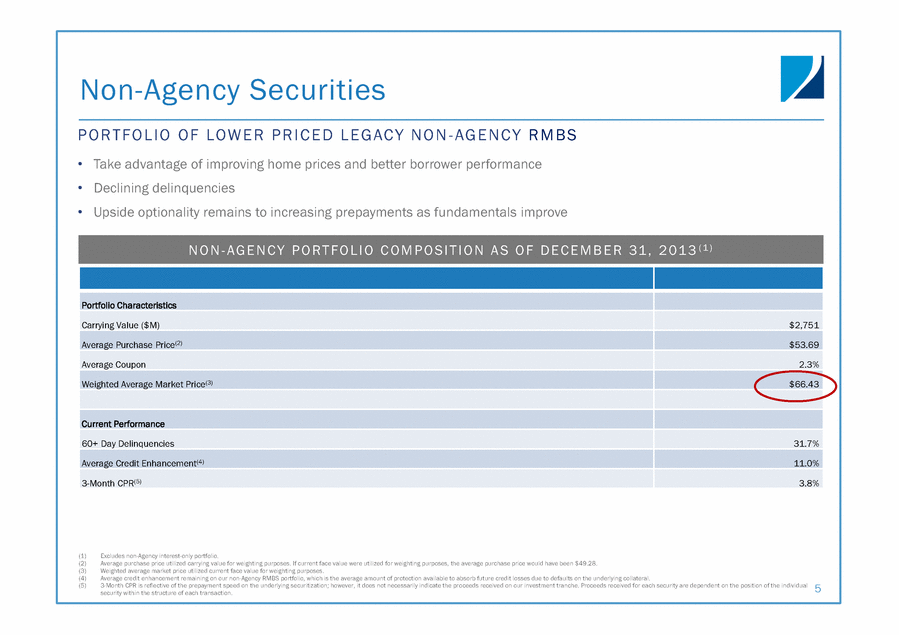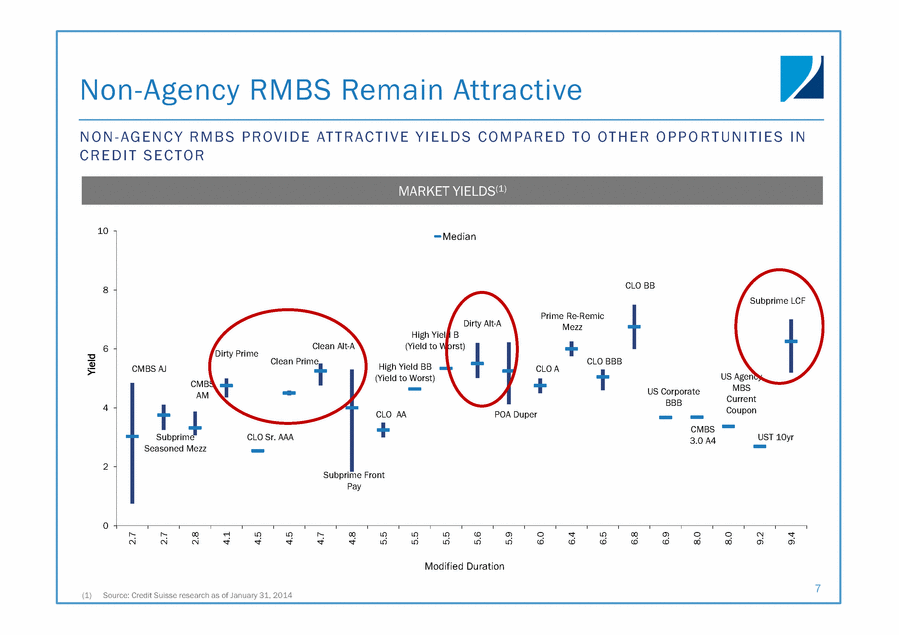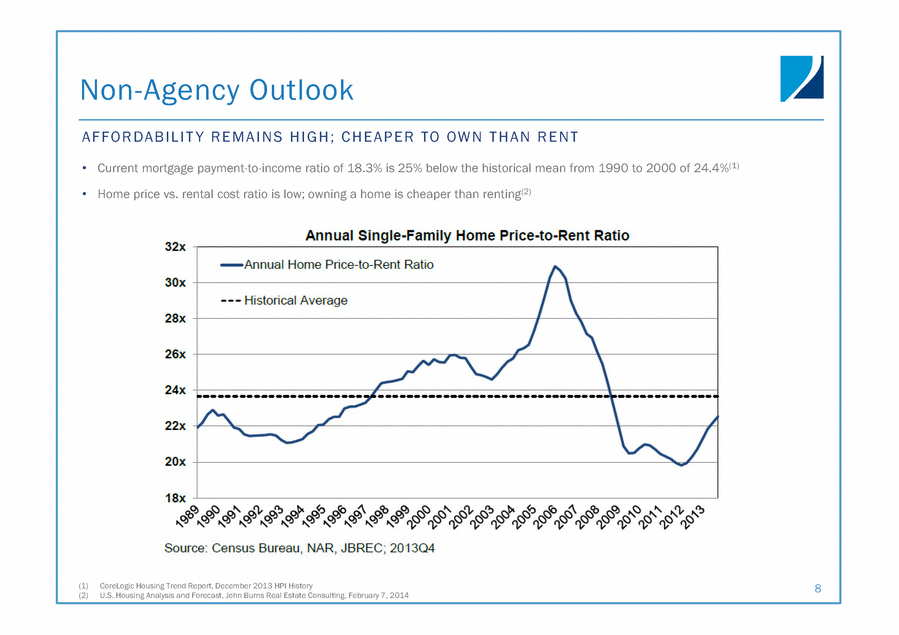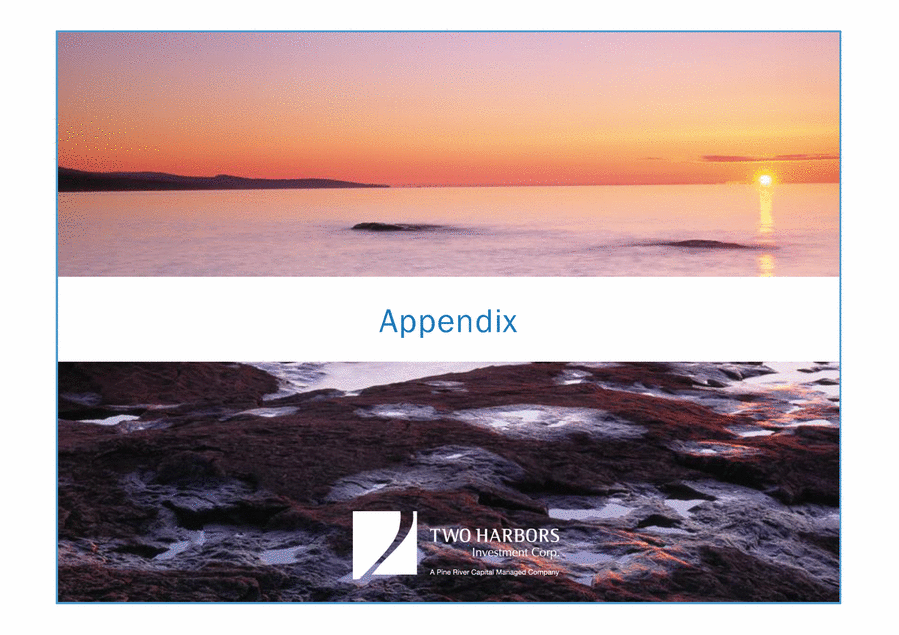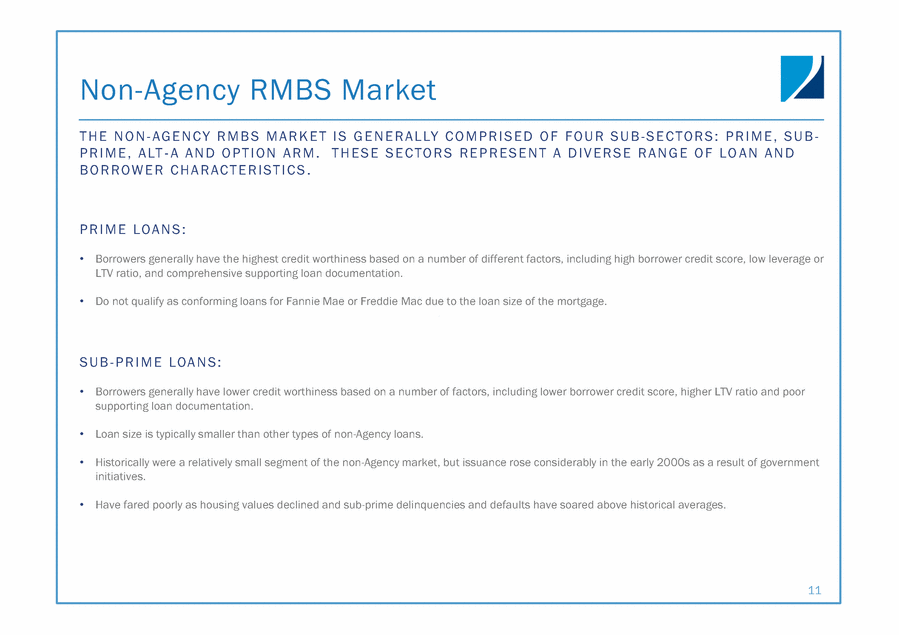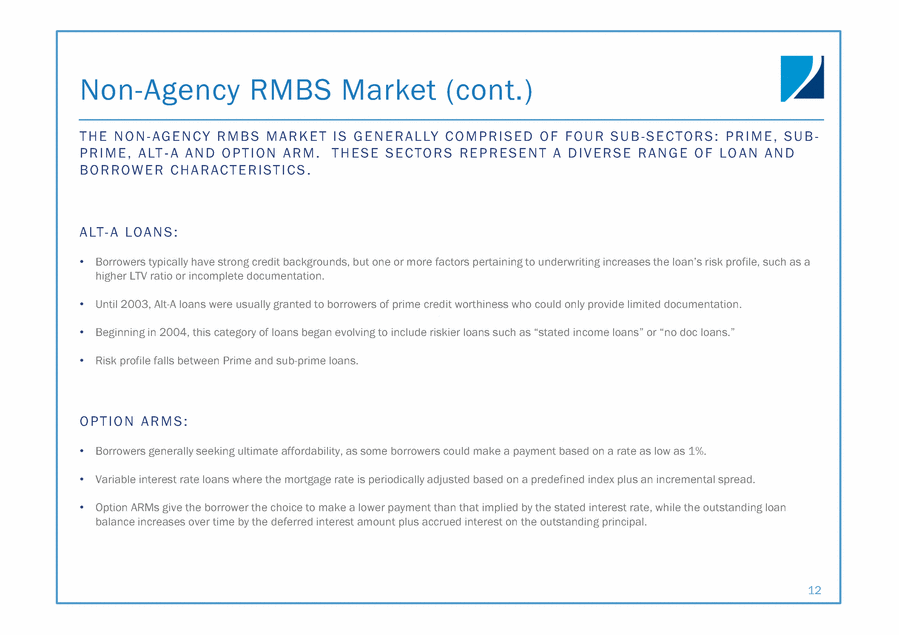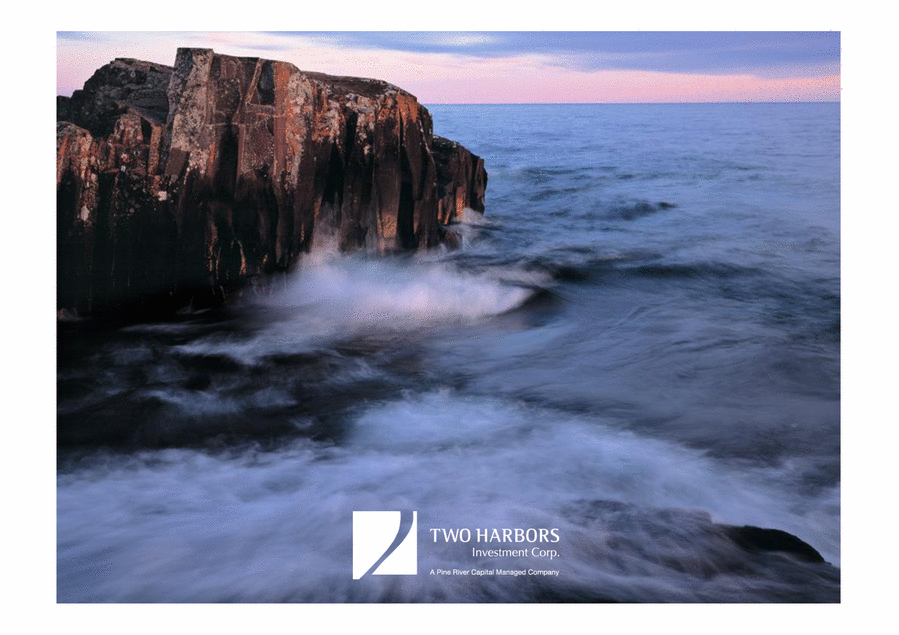Attached files
| file | filename |
|---|---|
| 8-K - 8-K - TWO HARBORS INVESTMENT CORP. | a14-8369_18k.htm |
| EX-99.1 - EX-99.1 - TWO HARBORS INVESTMENT CORP. | a14-8369_1ex99d1.htm |
|
|
March 18, 2014 Introduction to Non-Agency Securities Webinar Exhibit 99.2 |
|
|
Safe Harbor Statement FORWARD-LOOKING STATEMENTS This presentation includes -looking within the meaning of the safe harbor provisions of the United States Private Securities Litigation Reform Act of 1995. Actual results may differ from expectations, estimates and projections and, consequently, readers should not rely on these forward-looking statements as predictions of future events. Words such as and similar expressions are intended to identify such forward-looking statements. These forward-looking statements involve significant risks and uncertainties that could cause actual results to differ materially from expected results, including, among other things, those described in our Annual Report on Form 10-K for the year ended December 31, 2013 and any subsequent Quarterly Reports on Form 10-Q, under the caption Factors Factors that could cause actual results to differ include, but are not limited to, higher than expected operating costs, changes in prepayment speeds of mortgages underlying our residential mortgage-backed securities, the rates of default or decreased recovery on the mortgages underlying our non-Agency securities, failure to recover credit losses in our portfolio, changes in interest rates and the market value of our assets, the availability of financing, the availability of target assets at attractive prices, our ability to manage various operational risks associated with our business, our ability to maintain our REIT qualification, limitations imposed on our business due to our REIT status and our exempt status under the Investment Company Act of 1940, the impact of new legislation or regulatory changes on our operations, the impact of any deficiencies in the servicing or foreclosure practices of third parties and related delays in the foreclosure process, our ability to acquire mortgage loans or securitize the mortgage loans we acquire, our involvement in securitization transactions, the timing and profitability of our securitization transactions, the risks associated with our securitization transactions, our ability to acquire mortgage servicing rights, the impact of new or modified government mortgage refinance or principal reduction programs, unanticipated changes in overall market and economic conditions, and our exposure to claims and litigation, including litigation arising from our involvement in securitization transactions. Readers are cautioned not to place undue reliance upon any forward-looking statements, which speak only as of the date made. Two Harbors does not undertake or accept any obligation to release publicly any updates or revisions to any forward-looking statement to reflect any change in its expectations or any change in events, conditions or circumstances on which any such statement is based. Additional information concerning these and other risk factors is contained in Two most recent filings with the Securities and Exchange Commission (SEC). All subsequent written and oral forward looking statements concerning Two Harbors or matters attributable to Two Harbors or any person acting on its behalf are expressly qualified in their entirety by the cautionary statements above. Readers are advised that the financial information in this presentation is based on company data available at the time of this presentation, and unless otherwise noted, has not been audited by the independent auditors. This presentation may include industry and market data obtained through research, surveys, and studies conducted by third parties and industry publications. We have not independently verified any such market and industry data from third-party sources. 2 |
|
|
Agency & Non-Agency Mortgage-Backed Securities 3 WHAT IS AN AGENCY SECURITY? An Agency residential mortgage-backed security (RMBS) conforms with certain requirements, such as size, documentation and loan-to-value (LTV) ratios, and is backed by Fannie Mae, Freddie Mac or Ginnie Mae. Fannie Mae and Freddie Mac are collectively called Government-Sponsored Enterprises (GSEs). Ginnie Mae securities are backed by the full faith and credit of the U.S. Government. WHAT IS A NON-AGENCY SECURITY? A non-Agency RMBS is a security that is not backed by a government Agency. The underlying collateral generally consists of mortgages that are not required to conform to the requirements (size, documentation, LTV, etc.) for inclusion in RMBS issued by Agencies. The non-Agency RMBS market is generally comprised of four sub-sectors: Prime, Sub-prime, AltA and Option ARM.(1) Non-Agency RMBS can be classified into two categories: Legacy and New Issue. Legacy non-Agency RMBS contain loans that were originated prior to the 2008 financial crisis and therefore, trade at a deep discount due to having experienced high levels of defaults by the underlying borrowers. New Issue non-Agency RMBS are backed by newly originated, high quality, well-underwritten loans. Two Harbors invests in both Legacy and New Issue non-Agency RMBS. The majority of our non-Agency holdings are in the Legacy category and were purchased at a deep discount to par. Over 80% of our Legacy non-Agency holdings are in Sub-Prime RMBS. (1) See Appendix slides 11 and 12 for more information on non-Agency RMBS market. |
|
|
CREDIT PORTFOLIO SUMMARY Portfolio Composition 4 $3.5 billion Credit portfolio includes: Non-Agency RMBS Net economic interest in securitization trusts Prime jumbo residential mortgage loans Credit sensitive loans (CSL) Strong Credit strategy returns drove aggregate portfolio performance in 2013 Substantial progress expanding the foundation for our mortgage loan conduit platform Leverage 1.1x as of December 31, 2013 (1) Assets RMBS and Mortgage Servicing Rights (MSR). (2) -Agency RMBS, prime jumbo loans, net economic interest in securitization trusts and CSL. See slide 5 for details regarding Two Harbors Credit holdings. PORTFOLIO COMPOSITION Rates(1) $10.2B Credit(2) $3.5B AS OF DECEMBER 31, 2013 $13.7B Portfolio $ Millions Mezzanine $469 Senior $2,282 Other $281 CSL $425 TWO HARBORS MAINTAINS SUBSTANTIAL HOLDINGS OF LOWER PRICED LEGACY NON-AGENCY RMBS |
|
|
Non-Agency Securities 5 Portfolio Characteristics Carrying Value ($M) $2,751 Average Purchase Price(2) $53.69 Average Coupon 2.3% Weighted Average Market Price(3) $66.43 Current Performance 60+ Day Delinquencies 31.7% Average Credit Enhancement(4) 11.0% 3-Month CPR(5) 3.8% (1) Excludes non-Agency interest-only portfolio. (2) Average purchase price utilized carrying value for weighting purposes. If current face value were utilized for weighting purposes, the average purchase price would have been $49.28. (3) Weighted average market price utilized current face value for weighting purposes. (4) Average credit enhancement remaining on our non-Agency RMBS portfolio, which is the average amount of protection available to absorb future credit losses due to defaults on the underlying collateral. (5) 3-Month CPR is reflective of the prepayment speed on the underlying securitization; however, it does not necessarily indicate the proceeds received on our investment tranche. Proceeds received for each security are dependent on the position of the individual security within the structure of each transaction. PORTFOLIO OF LOWER PRICED LEGACY NON-AGENCY RMBS Take advantage of improving home prices and better borrower performance Declining delinquencies Upside optionality remains to increasing prepayments as fundamentals improve NON-AGENCY PORTFOLIO COMPOSITION AS OF DECEMBER 31, 2013( 1 ) |
|
|
Non-Agency Performance LEGACY NON-AGENCY RMBS FOCUSED ON AREAS WITH STRONG HOUSING RECOVERY METRICS Non-Agency RMBS have rallied as the housing market has recovered In 2013, the national average housing price appreciation (HPA) was +11.0%(1) Still potential for appreciation: National HPA is 22% higher than the bottom of the housing market, but still 18% lower than the peak(2) Analysts project 5% HPA in 2014(3) VIDEO OF HPA GROWTH BY METROPOLITAN STATISTICAL AREA (MSA)(4) http://tinyurl.com/k25jnjk DRIVERS OF LEGACY NON-AGENCY PERFORMANCE GOING FORWARD Prepayments: turnover & refinancings Lower delinquencies and defaults Possible government sponsored refinancing program 6 (1) CoreLogic Home Price Index as of December 31, 2013 (2) CoreLogic Housing Trend Report, December 2013 HPI History (3) Credit Suisse research, November 22, 2013 (4) Video utilizes data from CoreLogic Housing Trend Report, which illustrates HPA growth by MSA as of December 2013. The video is provided for illustration purposes only and is not indicative of future HPA or portfolio performance. |
|
|
Non-Agency RMBS Remain Attractive NON-AGENCY RMBS PROVIDE ATTRACTIVE YIELDS COMPARED TO OTHER OPPORTUNITIES IN CREDIT SECTOR 7 MARKET YIELDS(1) (1) Source: Credit Suisse research as of January 31, 2014 0 2 4 6 8 10 2.7 2.7 2.8 4.1 4.5 4.5 4.7 4.8 5.5 5.5 5.5 5.6 5.9 6.0 6.4 6.5 6.8 6.9 8.0 8.0 9.2 9.4 Yield Modified Duration Median Dirty Prime Clean Alt-A Dirty Alt-A POA Duper Clean Prime US Agency MBS Current Coupon High Yield BB (Yield to Worst) High Yield B (Yield to Worst) Subprime LCF US Corporate BBB Subprime Seasoned Mezz Prime Re-Remic Mezz UST 10yr CLO Sr. AAA CLO AA CLO A CLO BBB CLO BB CMBS AM CMBS AJ Subprime Front Pay CMBS 3.0 A4 |
|
|
Non-Agency Outlook AFFORDABILIT Y REMAINS HIGH; CHEAPER TO OWN THAN RENT Current mortgage payment-to-income ratio of 18.3% is 25% below the historical mean from 1990 to 2000 of 24.4%(1) Home price vs. rental cost ratio is low; owning a home is cheaper than renting(2) 8 (1) CoreLogic Housing Trend Report, December 2013 HPI History (2) U.S. Housing Analysis and Forecast, John Burns Real Estate Consulting, February 7, 2014 |
|
|
Non-Agency Outlook EXPECT PREPAYMENTS TO RISE Drivers of higher prepayments include: Refinancings due to low interest rates Better economic growth HPA Increasing housing turnover from better mobility as employment metrics improve WE BELIEVE SIGNIFICANT UPSIDE POTENTIAL REMAINS Conservative prepay/default assumptions Servicer actions are helping borrowers 9 -Agency RMBS portfolio: 3.8% in 2013 3.2% in 2012 2.4% in 2011 Prepays still well below historic average |
|
|
Appendix |
|
|
Non-Agency RMBS Market 11 THE NON-AGENCY RMBS MARKET I S GENERALLY COMPRISED OF FOUR SUB-SECTORS: PRIME, SUBPRIME, ALTA AND OPTION ARM. THESE SECTORS REPRESENT A DIVERSE RANGE OF LOAN AND BORROWER CHARACTERISTICS . PRIME LOANS: Borrowers generally have the highest credit worthiness based on a number of different factors, including high borrower credit score, low leverage or LTV ratio, and comprehensive supporting loan documentation. Do not qualify as conforming loans for Fannie Mae or Freddie Mac due to the loan size of the mortgage. SUB-PRIME LOANS: Borrowers generally have lower credit worthiness based on a number of factors, including lower borrower credit score, higher LTV ratio and poor supporting loan documentation. Loan size is typically smaller than other types of non-Agency loans. Historically were a relatively small segment of the non-Agency market, but issuance rose considerably in the early 2000s as a result of government initiatives. Have fared poorly as housing values declined and sub-prime delinquencies and defaults have soared above historical averages. |
|
|
Non-Agency RMBS Market (cont.) 12 THE NON-AGENCY RMBS MARKET I S GENERALLY COMPRISED OF FOUR SUB-SECTORS: PRIME, SUBPRIME, ALTA AND OPTION ARM. THESE SECTORS REPRESENT A DIVERSE RANGE OF LOAN AND BORROWER CHARACTERISTICS . ALT- A LOANS: isk profile, such as a higher LTV ratio or incomplete documentation. Until 2003, Alt-A loans were usually granted to borrowers of prime credit worthiness who could only provide limited documentation. ans Risk profile falls between Prime and sub-prime loans. OPTION ARMS: Borrowers generally seeking ultimate affordability, as some borrowers could make a payment based on a rate as low as 1%. Variable interest rate loans where the mortgage rate is periodically adjusted based on a predefined index plus an incremental spread. Option ARMs give the borrower the choice to make a lower payment than that implied by the stated interest rate, while the outstanding loan balance increases over time by the deferred interest amount plus accrued interest on the outstanding principal. |
|
|
[LOGO] |





